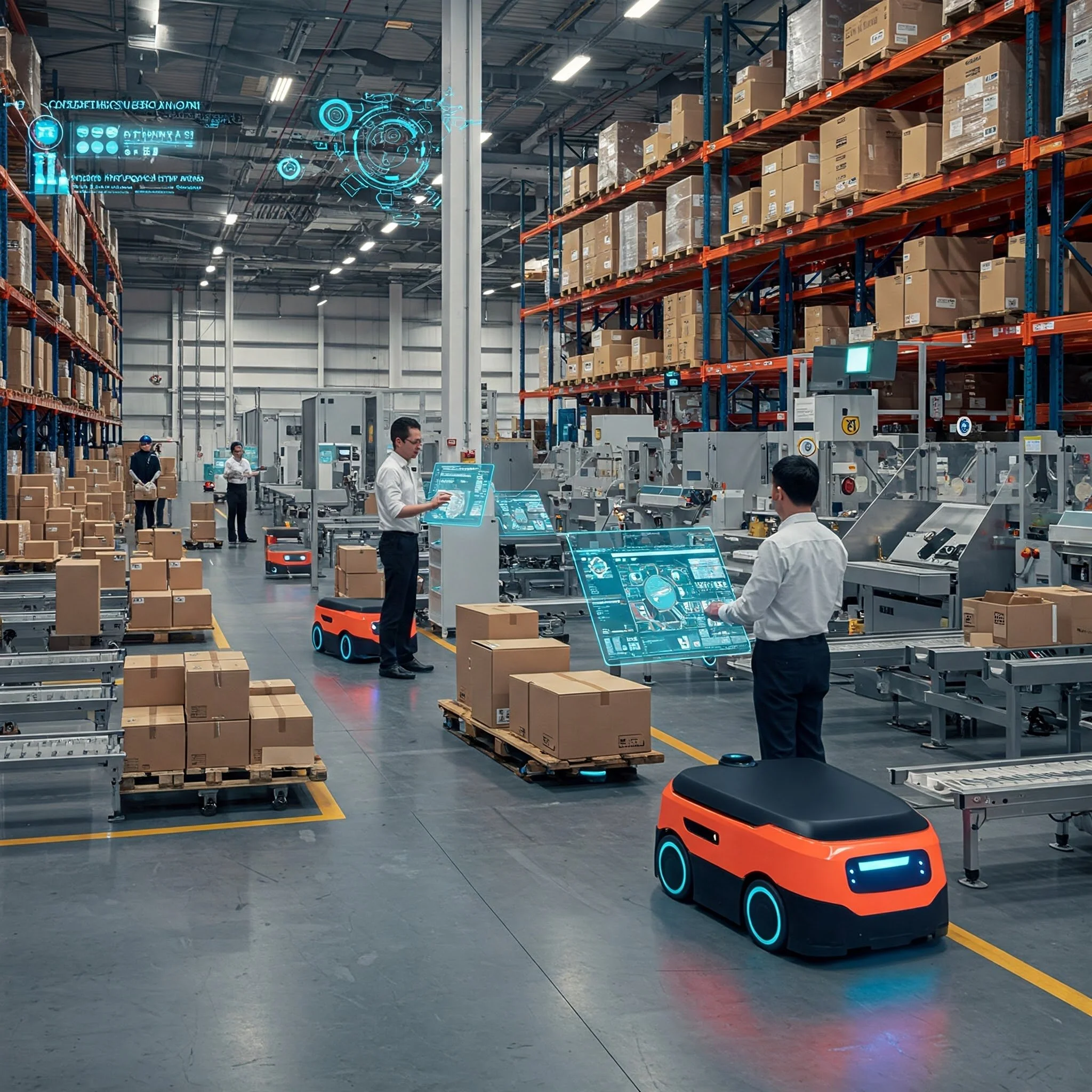How AI is Shaping the Future of Robotics (We’re Not Quite to Terminators)
Artificial Intelligence (AI) and robotics have rapidly evolved from futuristic fantasies to indispensable technologies transforming industries worldwide. From assembly lines to living rooms, the synergy between AI and robotics is reshaping our everyday lives—and sparking plenty of imagination along the way.
Wait, Did You Say Terminators?
Look, we’ve all seen the movies. Robots with AI might sound amazing until someone casually mentions Skynet. With robots already jogging alongside humans in marathons and moving into our homes, who knows—maybe that friendly AI assistant is quietly planning world domination while politely reminding you about tomorrow’s weather. As robots increasingly permeate every sector, from healthcare to retail, our reliance on their efficiency becomes undeniable. Recently, a robot even raced against human athletes in a half-marathon—how long until it decides marathons aren't challenging enough and goes for Olympic gold? Even your favorite coffee brand might soon be delivering your latte via a robot barista.
From industrial automation to household chores, these examples highlight just how integrated robots are becoming in our daily lives, driven by sophisticated AI algorithms that promise greater efficiency and convenience.
Real-Life AI & Robotics: 5 Fascinating Examples
BMW's New Workforce:BMW has deployed sophisticated humanoid robots in factories, leveraging advanced machine learning to adapt to real-time conditions. This enhances efficiency, safety, and blends human creativity with robotic precision. The 'general purpose' robots from robotics startup Figure are intended to automate dangerous or repetitive manufacturing tasks. Read more at The Verge
Humanoid Helpers at Home: Figure’s humanoid robots are being tested for household environments, equipped with advanced natural language processing and object recognition. These robots anticipate residents' needs, making daily life smoother and more intuitive. Figure's 2025 plans for the home aren't entirely clear, but “alpha” certainly implies that home testing will remain in the very early stages for some time. Read more at TechCrunch
Robotic Marathon Runners: China is hosting the world's first human-robot half-marathon, showcasing robotic athletes with AI-driven stamina and agility. This event demonstrates how robotic companions could transform physical endurance competitions. The race, scheduled for April 13 in the Beijing Economic-Technological Development Area, requires robots to have humanoid appearances and mechanical structures to walk or run on two legs. Read more at News.com.au
Meta’s Humanoid Robots: Meta is developing versatile humanoid robots designed for complex physical tasks and human interaction. These robots aim to significantly enhance productivity and comfort in both home and professional environments. Meta is embarking on a new venture to design hardware and software for humanoid robots through a dedicated team within its Reality Labs division. Read more at The Verge
AI-powered Robots at MWC: At Mobile World Congress, robots demonstrated capabilities from sophisticated customer interaction to precise manufacturing assistance. These robots showcase the potential for AI and robotics to seamlessly complement human work. The industry anticipates significant growth, reaching $178.63 billion by 2030, with a particular emphasis on robots for logistics, security, and personal care services. Read more at El País
5 Sample Prompts for AI in Manufacturing
If you’re in manufacturing, here are five prompts to kickstart your own AI-driven robotics initiatives:
Precision Assembly Optimization: "Create an advanced AI model for robotic arms that leverages real-time sensor data and reinforcement learning techniques to dynamically optimize precision assembly processes, targeting a reduction in error rates by at least 20% within three months. Include strategies for continuous learning and adaptation to changing manufacturing conditions."
Predictive Maintenance Model: "Build a robust predictive maintenance AI system that integrates seamlessly with existing factory robotics infrastructure, utilizing machine learning algorithms to proactively detect anomalies and predict maintenance needs, reducing downtime by up to 30%."
Quality Control and Defect Detection: "Develop an AI-powered computer vision solution for robotic inspection processes, capable of real-time defect identification with high accuracy, improving overall product quality assurance by minimizing false positives and reducing manual inspection time by 25%."
Factory Workflow Optimization: "Create an AI-based workflow optimization model that dynamically schedules and coordinates robotic tasks throughout the manufacturing line. The system should account for real-time data inputs, balancing workloads, and enhancing overall production throughput by at least 25%."
Collaborative Robotics System: "Design an AI-powered collaborative robotics (cobot) solution to enhance human-robot interaction on the factory floor, ensuring increased safety, productivity, and ergonomic efficiency. Incorporate natural language processing (NLP) and computer vision to enable intuitive, real-time communication and teamwork, reducing human-robot task completion time by 15%."
With AI and robotics rapidly converging, maybe Terminators aren’t on their way just yet—but a future of seamless, smarter, and possibly sassier robots is certainly right around the corner.

